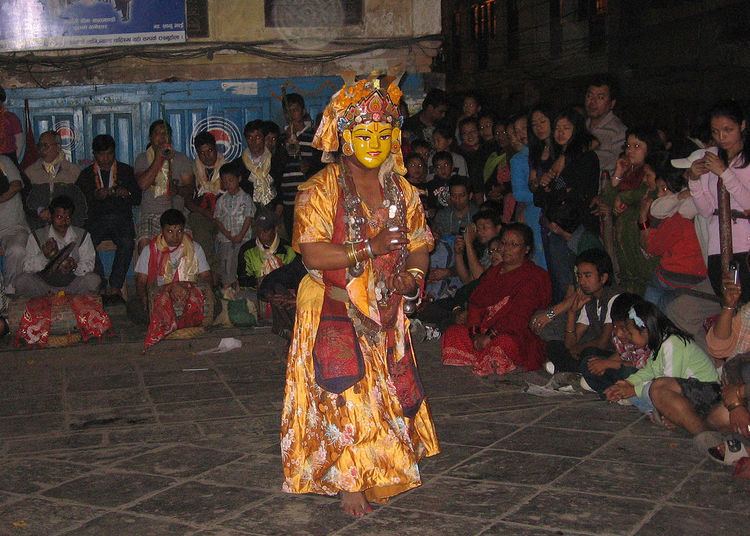 | ||
Newar Dance consists of the whole array of dances that are traditionally performed by Newars.
Classification
The Newar dances can be classified as
- Lakhey dance
- Astamatrika dance
- Navadurga dance
- Pulukisi dance (elephant dance)
- Sawabhakku
- Neelbarahi Naach, Bode, Madhyapur Thimi
The Majipa Lakhey dance is a masked dance characterized by vigorous movements and loud music. It is performed by the Ranjitkars of Kathmandu during the Yanya Punhi festival, also known as Indra Jatra, which occurs in September. The dancer and his attendants wander about the streets setting the tone of the festivities. The Gunla Lakhey dance is a similar street performance which tours various parts of the city during Gunla, the tenth month in the Nepal Sambat calendar, which corresponds to August. Almost all Newar settlements have a Lakhey dance troupe.
- Jyapu Pyakhan
- Tekanpur Pyakhan
- Charya Pyakhan
- Gathu Pyakhan
- Kumha Pyakhan dance
- Daitya Pyakhan
Charya Nritya (Chachaa Pyakhan in Nepal Bhasa) is a Buddhist ritual dance with a history going back more than 1,000 years. It is performed by Newar Buddhist priests known as Bajracharya as part of their esoteric meditation practices and rituals. The dancers represent various deities like the Five Buddhas, Manjusri, Vajrayogini and Tara. The song accompanying the dance opens with a salutation and describes the deity's characteristics and accessories. Performances were shown only to the initiated. The first public showing was held during the Fourth World Buddhist Conference held in Kathmandu in 1956.
